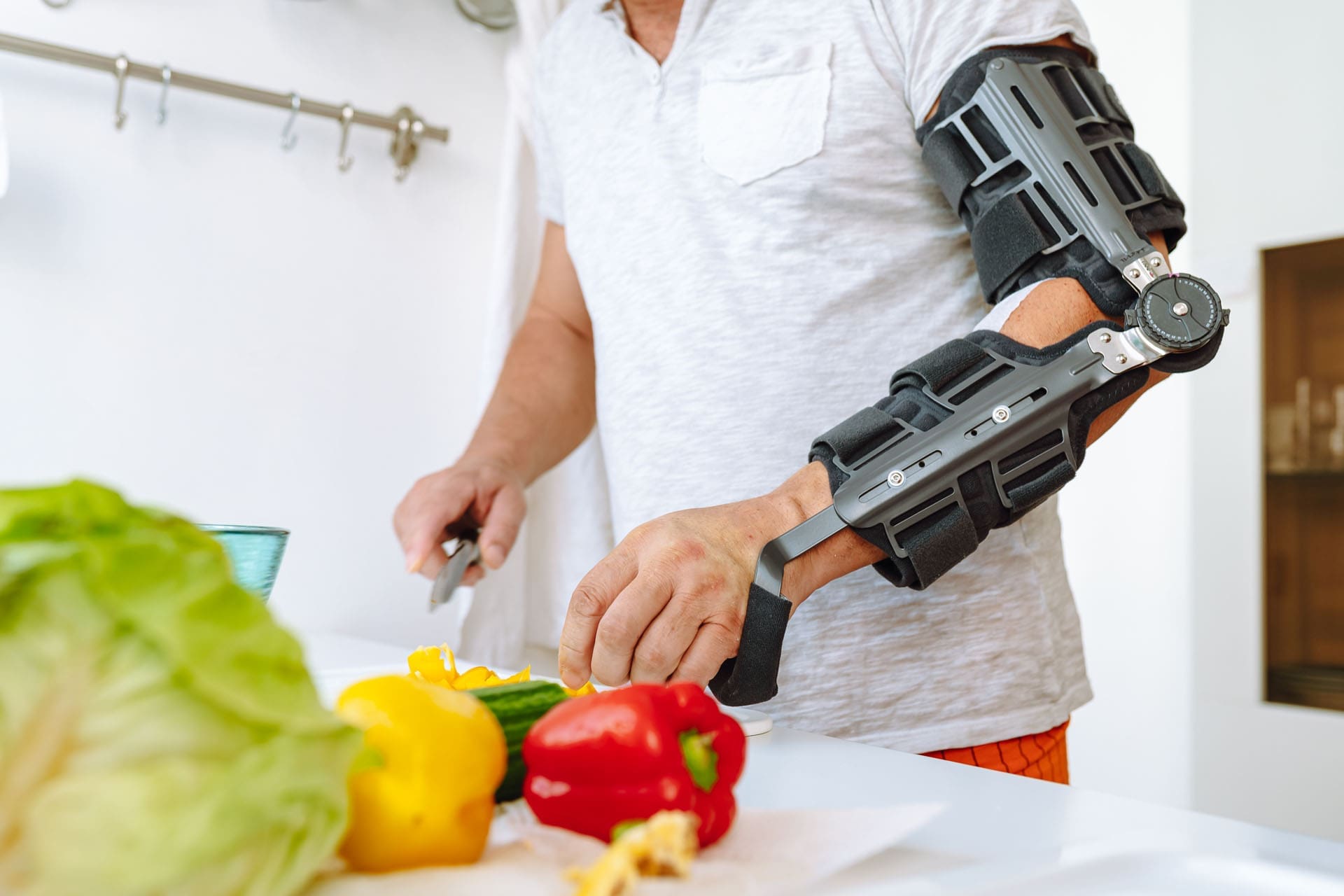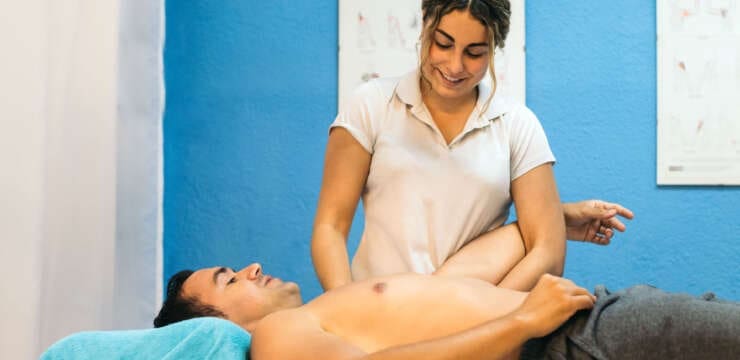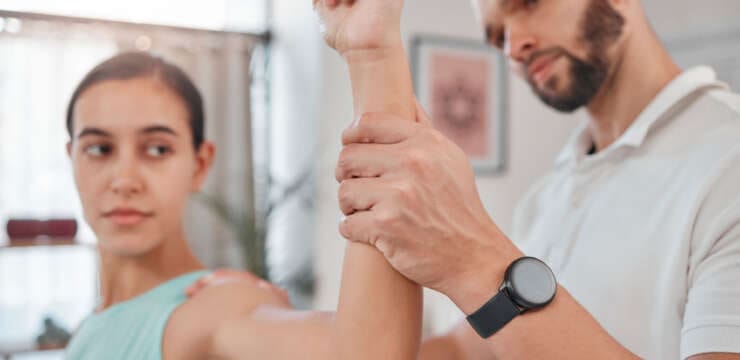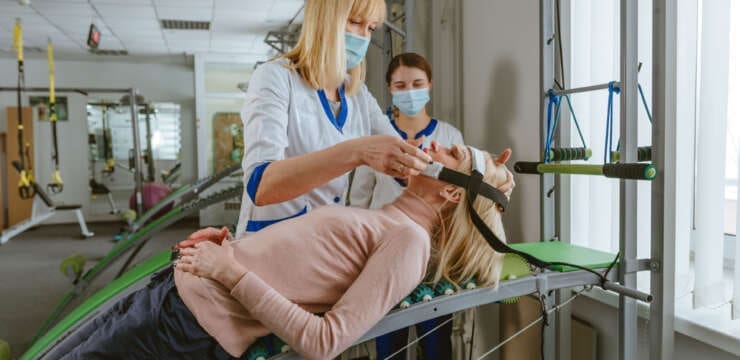
Table of Contents
Nutrition for Musculoskeletal Injury Recovery After Motor Vehicle Accidents

Introduction
Motor vehicle accidents (MVAs) are a significant cause of musculoskeletal injuries, ranging from minor strains to severe fractures, affecting millions annually. These injuries often impact muscles, ligaments, tendons, and bones, leading to pain, inflammation, and reduced mobility. Recovery from such injuries requires a comprehensive approach, where nutrition plays a pivotal role in supporting tissue repair, reducing inflammation, and maintaining overall health. A well-planned diet rich in proteins, healthy fats, complex carbohydrates, and fruits and vegetables can accelerate healing and help individuals return to their daily activities faster. This article explores the types of musculoskeletal injuries caused by MVAs, the importance of a rehabilitation diet, and the expertise of professionals like Dr. Alexander Jimenez, who integrates chiropractic care, medical treatment, and nutritional strategies to support recovery.
Key Points Covered:
- Types and mechanisms of musculoskeletal injuries from MVAs
- The role of nutrition in tissue repair, inflammation reduction, and overall health
- Dr. Alexander Jimenez’s expertise in treating MVA injuries
- Practical dietary recommendations for recovery
Musculoskeletal Injuries from Motor Vehicle Accidents
Motor vehicle accidents are a leading cause of musculoskeletal injuries worldwide, with an estimated 20–50 million non-fatal injuries occurring annually (World Health Organization, 2020). These injuries vary in severity, depending on the accident’s impact, speed, and the individual’s position in the vehicle. Common musculoskeletal injuries include:
- Whiplash: A soft tissue injury affecting the neck’s muscles, ligaments, and tendons, often caused by sudden acceleration-deceleration forces.
- Fractures: Breaks in bones, such as ribs, clavicles, or vertebrae, resulting from high-impact collisions.
- Sprains and Strains: Overstretching or tearing of ligaments (sprains) or muscles/tendons (strains), commonly in the back or shoulders.
- Dislocations: Joints, such as the shoulder or hip, being forced out of alignment due to trauma.
- Tendon Injuries: Damage to tendons, particularly in the rotator cuff or Achilles tendon, from sudden force or twisting.
The mechanism of injury in MVAs often involves rapid deceleration, rotational forces, or direct trauma, leading to tissue damage and inflammation. For example, whiplash, one of the most common MVA injuries, occurs when the head and neck are suddenly jerked forward and backward, straining the cervical spine’s soft tissues. This triggers an inflammatory response, causing pain, stiffness, and reduced range of motion (Elysian Wellness Centre, 2025). Severe injuries, such as fractures or dislocations, may require surgical intervention, immobilization, and prolonged rehabilitation, increasing the risk of muscle atrophy and delayed recovery (Proactive Physical Therapy, 2024).
The body’s response to musculoskeletal injuries involves a complex healing process, including inflammation, tissue repair, and remodeling. Nutrition plays a critical role in each phase, providing the building blocks for tissue regeneration and modulating inflammation to prevent chronic pain or delayed healing.
References
- Elysian Wellness Centre. (2025). Motor vehicle accidents rehabilitation: What now? Retrieved from elysianwellnesscentre.com/blog/motor-vehicle-accidents-rehabilitation-what-now/%5B%5D(https://respmr.com/tantalizing-powerful-foods-to-supercharge-injury-recovery/)
- Proactive Physical Therapy. (2024). Nutrition for injuries: Best foods for recovery. Retrieved from proactivept.com/blog/nutrition-for-injuries-best-foods-for-recovery/%5B%5D(https://proactivept.com/blog/nutrition-for-injuries-best-foods-for-recovery/)
- World Health Organization. (2020). Road traffic injuries. Retrieved from www.who.int/news-room/fact-sheets/detail/road-traffic-injuries
The Role of Nutrition in Musculoskeletal Injury Recovery
Proper nutrition is a cornerstone of recovery from musculoskeletal injuries, as it supports tissue repair, reduces inflammation, and maintains overall health. After an MVA, the body’s metabolic demands increase due to the energy required for healing, making a balanced diet essential (Dallas Accident and Injury Rehab, 2024). Key nutrients, including proteins, healthy fats, carbohydrates, and micronutrients from fruits and vegetables, play specific roles in the recovery process.
Proteins: The Building Blocks of Tissue Repair
Proteins are essential for repairing and rebuilding damaged tissues, such as muscles, ligaments, and tendons. After an MVA, immobilization or reduced activity can lead to muscle atrophy, with studies showing a 3.9% loss of leg muscle mass after just two weeks of inactivity (PMC, 2024). Adequate protein intake helps prevent this by providing amino acids, the building blocks for muscle protein synthesis (MPS). For non-athletes, a protein intake of 1.3–1.8 g/kg of body weight per day is recommended during recovery, while athletes may require up to 2.3 g/kg to combat anabolic resistance (BSW Health, 2023).
High-quality protein sources include:
- Lean meats: Chicken, turkey, and lean beef provide complete proteins rich in essential amino acids like leucine, which stimulates MPS.
- Fish: Salmon and tuna offer protein and omega-3 fatty acids, which reduce inflammation.
- Plant-based proteins: Beans, lentils, tofu, and quinoa are excellent options for vegetarians.
- Dairy and eggs: These provide high-quality protein and micronutrients like calcium and vitamin D for bone health.
Whey protein, in particular, is effective due to its rapid digestion and high leucine content, which enhances muscle repair (PMC, 2020). For example, a 30 g serving of whey protein post-rehabilitation session can significantly boost tissue regeneration (Essendon Sports Medicine, 2023).
Healthy Fats: Modulating Inflammation
Healthy fats, particularly omega-3 fatty acids, are crucial for managing inflammation, a natural but potentially harmful response to injury. Excessive inflammation can prolong pain and delay healing, while controlled inflammation is necessary for tissue repair (PMC, 2024). Omega-3s, found in fatty fish (salmon, mackerel, sardines), flaxseeds, chia seeds, and walnuts, reduce inflammatory markers and support cell membrane health (Wellbeings Medicine, 2024). A low omega-6 to omega-3 ratio is recommended to optimize anti-inflammatory effects, as high omega-6 intake (common in processed foods) can exacerbate inflammation (PMC, 2024).
Carbohydrates: Energy for Healing
Carbohydrates provide the energy needed for the body’s healing processes, including immune function and tissue repair. Complex carbohydrates, such as whole grains, fruits, vegetables, and dairy, are preferred over simple sugars, which can cause hyperglycemia and impair healing (PMC, 2020). During recovery, carbohydrate intake should range from 3–5 g/kg of body weight or 55% of total calories, increasing with physical activity levels (PMC, 2020). For example, a diet including oats, quinoa, sweet potatoes, and berries supports energy needs while providing antioxidants to combat oxidative stress.
Fruits and Vegetables: Micronutrients for Recovery
Fruits and vegetables are rich in vitamins, minerals, and antioxidants that support tissue repair and immune function. Key micronutrients include:
- Vitamin C: Found in citrus fruits, strawberries, bell peppers, and broccoli, it aids collagen production, essential for tendon and ligament repair.
- Vitamin A: Present in sweet potatoes, carrots, and leafy greens, it promotes skin health and tissue regeneration.
- Zinc: Found in nuts, seeds, and whole grains, it supports wound healing and immune function.
- Vitamin D: Available in fatty fish, egg yolks, and fortified foods, it enhances calcium absorption for bone health, critical for fracture recovery.
Antioxidants like flavonoids (in berries) and vitamin E (in nuts and seeds) reduce oxidative stress, protecting cells from damage during the inflammatory phase (RespMR, 2024). A colorful variety of fruits and vegetables ensures a broad spectrum of these nutrients.
Hydration: Supporting Cellular Health
Adequate hydration is vital for transporting nutrients to cells and removing waste products, preventing complications like edema (Elysian Wellness Centre, 2025). Aim for 8–10 glasses of water daily, supplemented by water-rich foods like melons, strawberries, and celery (BSW Health, 2023). For severe injuries, such as those requiring surgery, hydration needs may increase due to higher metabolic demands.
Practical Dietary Tips
- Balance macronutrients: Include a source of protein, complex carbohydrates, and healthy fats in each meal. For example, a recovery meal could consist of grilled salmon, quinoa, steamed broccoli, and a side of mixed berries.
- Avoid processed foods: These often contain unhealthy fats and sugars that increase inflammation (RespMR, 2024).
- Consider liquid diets post-surgery: Smoothies with protein powder, fruits, and vegetables can alleviate nausea and provide prebiotics/probiotics to restore gut health (Proactive Physical Therapy, 2024).
- Work with a dietitian: A personalized meal plan tailored to injury severity and individual needs can optimize recovery (Dallas Accident and Injury Rehab, 2024).
By prioritizing these nutrients, individuals can support their body’s natural healing processes, reduce recovery time, and prevent complications like muscle loss or chronic inflammation.
References
- BSW Health. (2023). Accelerate recovery: 6 ways proper nutrition helps heal sports injuries. Retrieved from www.bswhealth.com/blog/6-ways-proper-nutrition-helps-heal-sports-injuries%5B%5D(https://www.bswhealth.com/blog/6-ways-proper-nutrition-helps-heal-sports-injuries)
- Dallas Accident and Injury Rehab. (2024). Nutritional support for recovery from work injuries. Retrieved from dallasaccidentandinjuryrehab.com/nutritional-support-for-recovery-from-work-injuries/%5B%5D(https://dallasaccidentandinjuryrehab.com/nutritional-support-for-recovery-from-work-injuries/)
- Essendon Sports Medicine. (2023). Healing from within: Nutrition strategies for injury recovery. Retrieved from www.essendonsportsmedicine.com.au/about/blog/healing-from-within-nutrition-strategies-for-injury-recovery%5B%5D(https://www.essendonsportsmedicine.com.au/about/blog/healing-from-within-nutrition-strategies-for-injury-recovery)
- Elysian Wellness Centre. (2025). Motor vehicle accidents rehabilitation: What now? Retrieved from elysianwellnesscentre.com/blog/motor-vehicle-accidents-rehabilitation-what-now/%5B%5D(https://respmr.com/tantalizing-powerful-foods-to-supercharge-injury-recovery/)
- Proactive Physical Therapy. (2024). Nutrition for injuries: Best foods for recovery. Retrieved from proactivept.com/blog/nutrition-for-injuries-best-foods-for-recovery/%5B%5D(https://proactivept.com/blog/nutrition-for-injuries-best-foods-for-recovery/)
- RespMR. (2024). Tantalizing & powerful foods to supercharge injury recovery. Retrieved from respmr.com/tantalizing-powerful-foods-to-supercharge-injury-recovery/%5B%5D(https://respmr.com/tantalizing-powerful-foods-to-supercharge-injury-recovery/)
- PMC. (2020). Nutritional considerations and strategies to facilitate injury recovery and rehabilitation. Retrieved from www.ncbi.nlm.nih.gov/pmc/articles/PMC7468807/%5B%5D(https://www.ncbi.nlm.nih.gov/pmc/articles/PMC7534941/)
- PMC. (2024). Nutritional strategies in the rehabilitation of musculoskeletal injuries in athletes: A systematic integrative review. Retrieved from pmc.ncbi.nlm.nih.gov/articles/PMC11643565/%5B%5D(https://www.mdpi.com/2072-6643/15/4/819)
- Wellbeings Medicine. (2024). Healing through nutrition: Dietary strategies for auto accident injury recovery. Retrieved from wellbeingsmedicine.com/finding-the-best-chiropractor/healing-through-nutrition-dietary-strategies-for-auto-accident-injury-recovery/%5B%5D(https://www.ncbi.nlm.nih.gov/pmc/articles/PMC7534941/)
Dr. Alexander Jimenez: Expertise in MVA Injury Recovery
Dr. Alexander Jimenez, DC, APRN, FNP-BC, is a renowned chiropractor and nurse practitioner in El Paso, Texas, specializing in the treatment of musculoskeletal injuries from motor vehicle accidents. His unique combination of chiropractic expertise, medical training, and integrative medicine knowledge allows him to address both the medical and legal complexities of personal injury cases, making him a valuable resource for MVA victims.
Clinical Correlation: Dual-Diagnosis and Treatment
Dr. Jimenez employs a dual-diagnosis approach, combining chiropractic assessments with advanced medical evaluations to identify the full extent of injuries. Musculoskeletal injuries from MVAs often involve multiple tissues (e.g., muscles, ligaments, and nerves), requiring a comprehensive diagnosis to address both primary and secondary conditions. For instance, a patient with whiplash may also experience referred pain or nerve irritation, necessitating a dual-diagnosis to treat both the soft tissue damage and neurological symptoms (Jimenez, 2025a).
His treatment protocols integrate:
- Chiropractic adjustments: To restore spinal alignment, reduce pain, and improve mobility.
- Rehabilitative exercises: To strengthen muscles and prevent atrophy during recovery.
- Nutritional counseling: To support tissue repair and reduce inflammation through a tailored diet.
- Pain management: Using non-invasive techniques to address acute and chronic pain.
Dr. Jimenez’s integrative approach targets the root causes of injuries, such as misaligned joints or inflamed tissues, rather than merely alleviating symptoms. This holistic strategy promotes long-term healing and prevents complications like chronic pain or reduced function (Jimenez, 2025b).
Diagnostic Assessments and Advanced Imaging
Accurate diagnosis is critical for effective treatment. Dr. Jimenez utilizes advanced imaging techniques, such as X-rays, MRIs, and CT scans, to assess the extent of musculoskeletal damage. For example:
- X-rays: Identify fractures or dislocations in bones.
- MRIs: Detect soft tissue injuries, such as ligament tears or disc herniations.
- CT scans: Provide detailed views of complex injuries, like vertebral fractures.
These tools allow Dr. Jimenez to create precise treatment plans tailored to the injury’s severity and location. Diagnostic assessments also include physical examinations to evaluate range of motion, muscle strength, and neurological function, ensuring all aspects of the injury are addressed (Jimenez, 2025c).
Unique Skills: Medical Care and Legal Paperwork
Dr. Jimenez’s dual qualifications as a chiropractor and nurse practitioner enable him to provide comprehensive medical care while navigating the legal complexities of personal injury cases. He assists with:
- Medical documentation: Detailed reports for insurance claims or legal proceedings, outlining the injury, treatment plan, and prognosis.
- Expert testimony: Providing clinical insights in court to support personal injury claims.
- Coordination with legal teams: Ensuring accurate medical records align with legal requirements.
This expertise is crucial in MVA cases, where insurance companies often require thorough documentation to process claims. Dr. Jimenez’s ability to bridge medical and legal needs streamlines the recovery process for patients (Jimenez, 2025a).
Chiropractic and Integrative Medicine in Recovery
Chiropractic care addresses the root causes of MVA injuries by correcting spinal misalignments, reducing nerve irritation, and improving blood flow to injured tissues. Integrative medicine complements this by incorporating nutritional strategies, physical therapy, and lifestyle changes. For example, Dr. Jimenez may recommend a diet high in omega-3s and vitamin C to reduce inflammation and support collagen synthesis, alongside chiropractic adjustments to restore joint function (Wellbeings Medicine, 2024). This combination enhances overall health, accelerates recovery, and reduces the risk of long-term complications.
References
- Jimenez, A. (2025a). Clinical correlation: Patient injuries and dual-diagnosis treatment. Retrieved from dralexjimenez.com/%5B%5D(https://www.sciencedirect.com/science/article/pii/S2405457725000324)
- Jimenez, A. (2025b). Health coach clinic: Integrative medicine for injury recovery. Retrieved from healthcoach.clinic/%5B%5D(https://www.sciencedirect.com/science/article/pii/S2405457725000324)
- Jimenez, A. (2025c). LinkedIn profile: Dr. Alexander Jimenez. Retrieved from www.linkedin.com/in/dralexjimenez/%5B%5D(https://www.sciencedirect.com/science/article/pii/S2405457725000324)
- Wellbeings Medicine. (2024). Healing through nutrition: Dietary strategies for auto accident injury recovery. Retrieved from wellbeingsmedicine.com/finding-the-best-chiropractor/healing-through-nutrition-dietary-strategies-for-auto-accident-injury-recovery/%5B%5D(https://www.ncbi.nlm.nih.gov/pmc/articles/PMC7534941/)
Practical Dietary Recommendations for MVA Recovery
To optimize recovery from musculoskeletal injuries caused by MVAs, a structured dietary plan is essential. Below are practical recommendations tailored to high school students and their families, ensuring accessibility and simplicity.
Sample Daily Meal Plan
- Breakfast: Greek yogurt with mixed berries, chia seeds, and granola (provides protein, antioxidants, and omega-3s).
- Snack: Apple slices with almond butter (offers vitamin C and healthy fats).
- Lunch: Grilled chicken breast, quinoa salad with spinach and bell peppers, and a glass of water (delivers protein, complex carbs, and micronutrients).
- Snack: Handful of walnuts and an orange (rich in omega-3s and vitamin C).
- Dinner: Baked salmon, sweet potato mash, and steamed broccoli (supports anti-inflammatory processes and tissue repair).
- Hydration: Aim for 8–10 glasses of water, supplemented by herbal teas or water-rich fruits like watermelon.
Tips for Implementation
- Meal Prep: Prepare meals in advance to ensure balanced nutrient intake, especially during busy school weeks.
- Involve Family: Encourage family members to adopt similar eating habits to create a supportive environment.
- Consult Professionals: Work with a dietitian or healthcare provider, like Dr. Jimenez, to tailor the diet to specific injuries.
- Limit Inflammatory Foods: Avoid processed snacks, sugary drinks, and fast foods to reduce inflammation (Karta Multisport, 2025).
Supplements: When Necessary
While whole foods are preferred, supplements like whey protein, omega-3 capsules, or vitamin D may be recommended for severe injuries or deficiencies. However, excessive supplementation (e.g., high-dose vitamin C) can slow healing, so consult a professional before use (BSW Health, 2023).
Long-Term Benefits
A nutrient-rich diet not only accelerates recovery but also strengthens the body against future injuries. By maintaining muscle mass, supporting bone health, and reducing inflammation, individuals can return to sports, school activities, and daily life with improved resilience (Med Navy, 2025).
References
- BSW Health. (2023). Accelerate recovery: 6 ways proper nutrition helps heal sports injuries. Retrieved from www.bswhealth.com/blog/6-ways-proper-nutrition-helps-heal-sports-injuries%5B%5D(https://www.bswhealth.com/blog/6-ways-proper-nutrition-helps-heal-sports-injuries)
- Karta Multisport. (2025). Diet after injury: 5 tips on how to eat to get back in shape quickly. Retrieved from www.kartamultisport.pl/en/article/diet-after-injury-5-tips-on-how-to-eat-to-get-back-in-shape-quickly%5B%5D(https://www.ncbi.nlm.nih.gov/pmc/articles/PMC7468744/)
- Med Navy. (2025). Wounded, ill, and injured nutrition fact sheet. Retrieved from www.med.navy.mil/Portals/62/Documents/NMFA/NMCPHC/root/Documents/health-promotion-wellness/wounded-ill-and-injured/wii-nutrition-fact-sheet.pdf%5B%5D(https://dallasaccidentandinjuryrehab.com/nutritional-support-for-recovery-from-work-injuries/)
Conclusion
Musculoskeletal injuries from motor vehicle accidents, ranging from whiplash to fractures, require a multifaceted approach to recovery, with nutrition playing a critical role. A diet rich in proteins, healthy fats, complex carbohydrates, and fruits and vegetables supports tissue repair, reduces inflammation, and maintains overall health. Professionals like Dr. Alexander Jimenez enhance recovery through integrative care, combining chiropractic adjustments, advanced diagnostics, and nutritional counseling. By adopting a balanced diet and working with experts, individuals can accelerate healing, prevent complications, and regain their quality of life. For high school students, these strategies are accessible and practical, empowering them to take control of their recovery journey.
References
Baylor Scott & White Health. (n.d.). 6 ways proper nutrition helps heal sports injuries. www.bswhealth.com/blog/6-ways-proper-nutrition-helps-heal-sports-injuries
Dallas Accident and Injury Rehab. (n.d.). Nutritional support for recovery from work injuries. dallasaccidentandinjuryrehab.com/nutritional-support-for-recovery-from-work-injuries/
Elysian Wellness Centre. (n.d.). Motor vehicle accidents rehabilitation: What now?. elysianwellnesscentre.com/blog/motor-vehicle-accidents-rehabilitation-what-now/
Essendon Sports Medicine. (n.d.). Healing from within: Nutrition strategies for injury recovery. www.essendonsportsmedicine.com.au/about/blog/healing-from-within-nutrition-strategies-for-injury-recovery
Jimenez, A. (n.d.-a). Dr. Alex Jimenez. dralexjimenez.com/
Jimenez, A. (n.d.-b). Health Coach Clinic. healthcoach.clinic/
Jimenez, A. (n.d.-c). LinkedIn Profile. www.linkedin.com/in/dralexjimenez/
Karta Multisport. (n.d.). Diet after injury: 5 tips on how to eat to get back in shape quickly. www.kartamultisport.pl/en/article/diet-after-injury-5-tips-on-how-to-eat-to-get-back-in-shape-quickly
Navy Medicine. (n.d.). WII nutrition fact sheet. www.med.navy.mil/Portals/62/Documents/NMFA/NMCPHC/root/Documents/health-promotion-wellness/wounded-ill-and-injured/wii-nutrition-fact-sheet.pdf
PMC. (2024). From food supplements to functional foods: Emerging perspectives on post-exercise recovery nutrition. pmc.ncbi.nlm.nih.gov/articles/PMC11643565/
ProActive Physical Therapy Clinics. (n.d.). Nutrition for injuries: Best foods for recovery. proactivept.com/blog/nutrition-for-injuries-best-foods-for-recovery/
Respmr. (n.d.). Tantalizing powerful foods to supercharge injury recovery. respmr.com/tantalizing-powerful-foods-to-supercharge-injury-recovery/
UNC School of Medicine. (n.d.). Nutritional strategies for recovery. www.med.unc.edu/uncsportsmedicineinstitute/wp-content/uploads/sites/1189/2022/10/Nutr-Strategies-Recovery.pdf
Well Beings Medicine. (n.d.). Healing through nutrition: Dietary strategies for auto accident injury recovery. wellbeingsmedicine.com/finding-the-best-chiropractor/healing-through-nutrition-dietary-strategies-for-auto-accident-injury-recovery/
Disclaimers
Professional Scope of Practice *
The information herein on "Diet for MVA Recovery After a Motor Vehicle Accident" is not intended to replace a one-on-one relationship with a qualified health care professional or licensed physician and is not medical advice. We encourage you to make healthcare decisions based on your research and partnership with a qualified healthcare professional.
Blog Information & Scope Discussions
Welcome to El Paso's wellness blog, where Dr. Alex Jimenez, DC, FNP-C, a board-certified Family Practice Nurse Practitioner (FNP-C) and Chiropractor (DC), presents insights on how our team is dedicated to holistic healing and personalized care. Our practice aligns with evidence-based treatment protocols inspired by integrative medicine principles, similar to those found on dralexjimenez.com, focusing on restoring health naturally for patients of all ages.
Our areas of chiropractic practice include Wellness & Nutrition, Chronic Pain, Personal Injury, Auto Accident Care, Work Injuries, Back Injury, Low Back Pain, Neck Pain, Migraine Headaches, Sports Injuries, Severe Sciatica, Scoliosis, Complex Herniated Discs, Fibromyalgia, Chronic Pain, Complex Injuries, Stress Management, Functional Medicine Treatments, and in-scope care protocols.
Our information scope is limited to chiropractic, musculoskeletal, physical medicine, wellness, contributing etiological viscerosomatic disturbances within clinical presentations, associated somato-visceral reflex clinical dynamics, subluxation complexes, sensitive health issues, and functional medicine articles, topics, and discussions.
We provide and present clinical collaboration with specialists from various disciplines. Each specialist is governed by their professional scope of practice and their jurisdiction of licensure. We use functional health & wellness protocols to treat and support care for the injuries or disorders of the musculoskeletal system.
Our videos, posts, topics, subjects, and insights cover clinical matters, issues, and topics that relate to and directly or indirectly support our clinical scope of practice.*
Our office has reasonably attempted to provide supportive citations and has identified the relevant research studies or studies supporting our posts. We provide copies of supporting research studies available to regulatory boards and the public upon request.
We understand that we cover matters that require an additional explanation of how they may assist in a particular care plan or treatment protocol; therefore, to discuss the subject matter above further, please feel free to ask Dr. Alex Jimenez, DC, APRN, FNP-BC, or contact us at 915-850-0900.
We are here to help you and your family.
Blessings
Dr. Alex Jimenez DC, MSACP, APRN, FNP-BC*, CCST, IFMCP, CFMP, ATN
email: coach@elpasofunctionalmedicine.com
Licensed as a Doctor of Chiropractic (DC) in Texas & New Mexico*
Texas DC License # TX5807
New Mexico DC License # NM-DC2182
Licensed as a Registered Nurse (RN*) in Texas & Multistate
Texas RN License # 1191402
ANCC FNP-BC: Board Certified Nurse Practitioner*
Compact Status: Multi-State License: Authorized to Practice in 40 States*
Graduate with Honors: ICHS: MSN-FNP (Family Nurse Practitioner Program)
Degree Granted. Master's in Family Practice MSN Diploma (Cum Laude)
Dr. Alex Jimenez, DC, APRN, FNP-BC*, CFMP, IFMCP, ATN, CCST
My Digital Business Card






